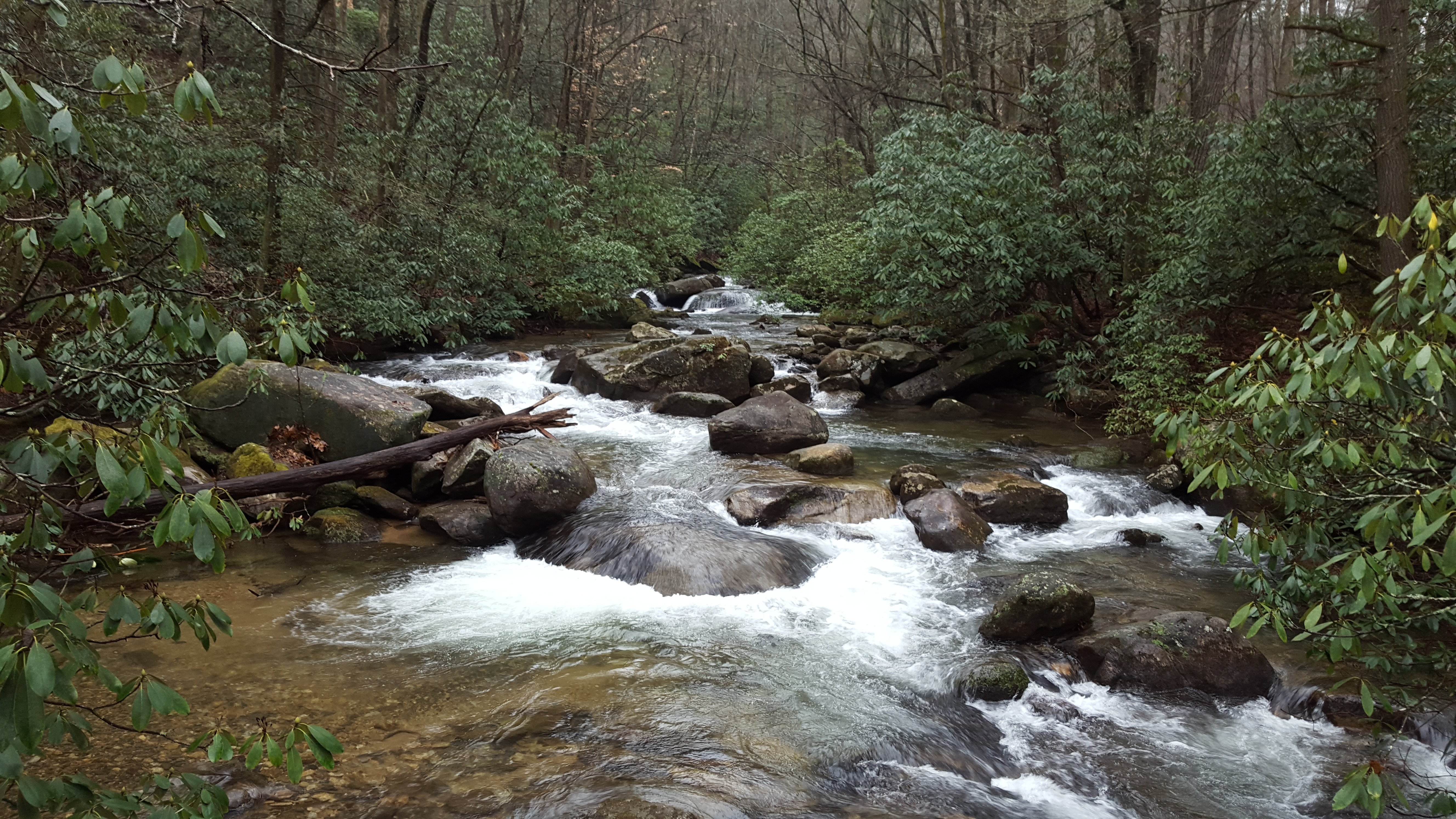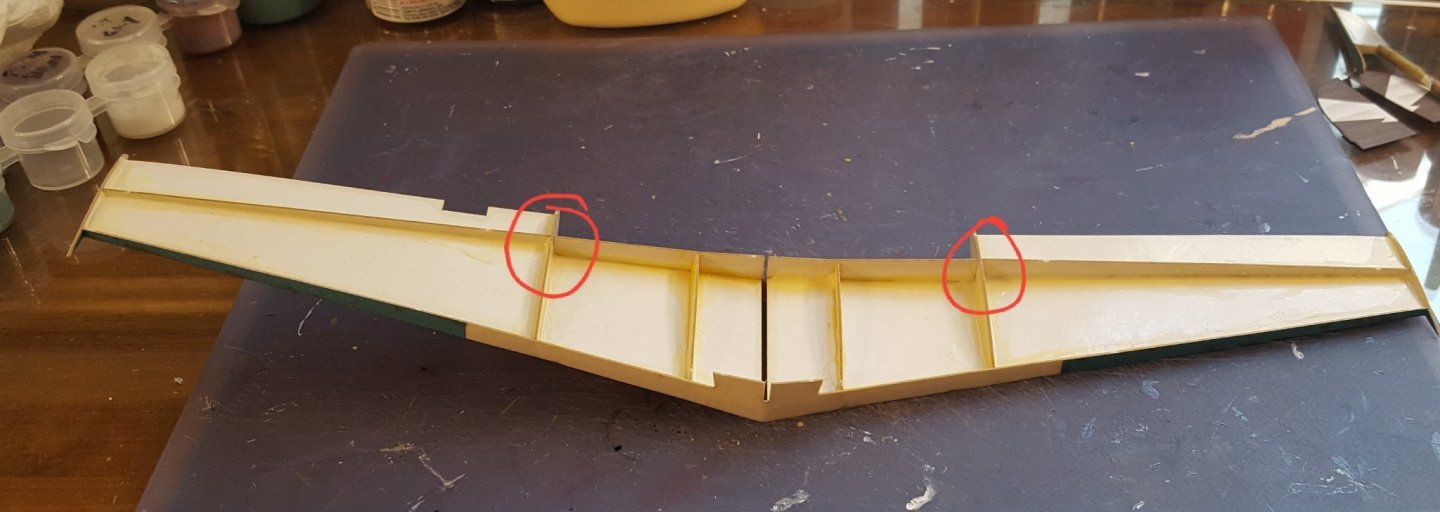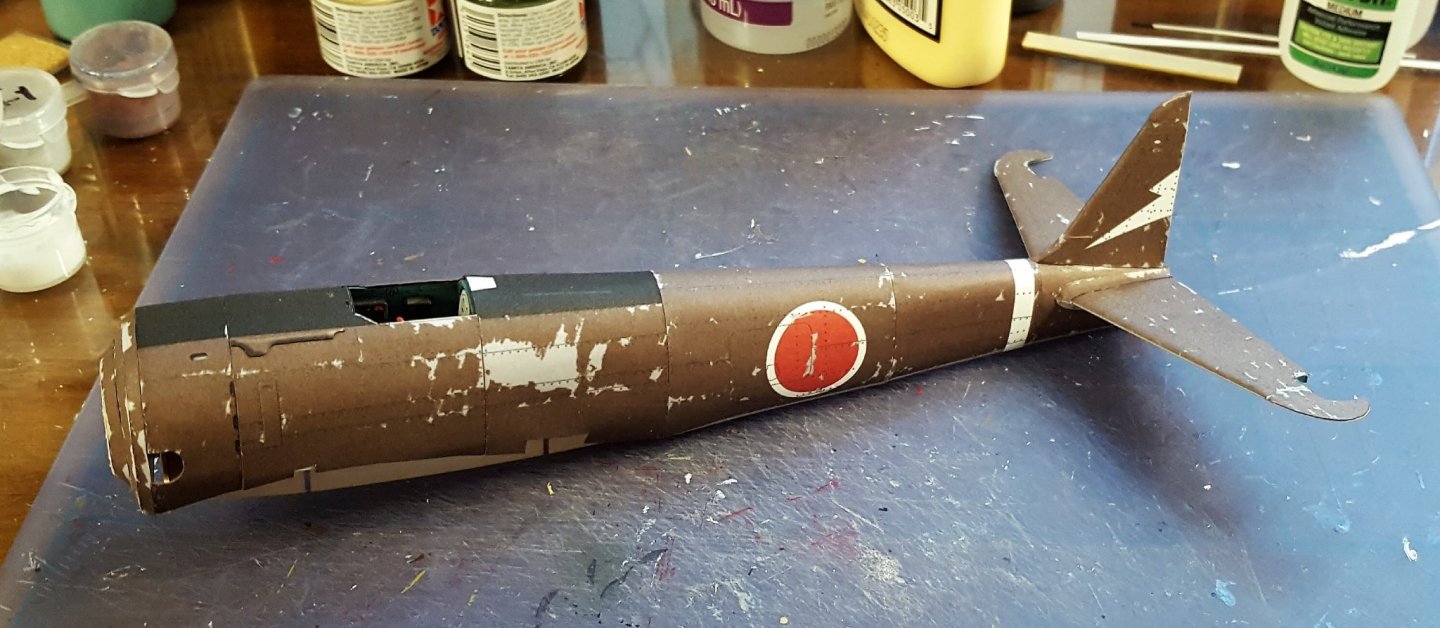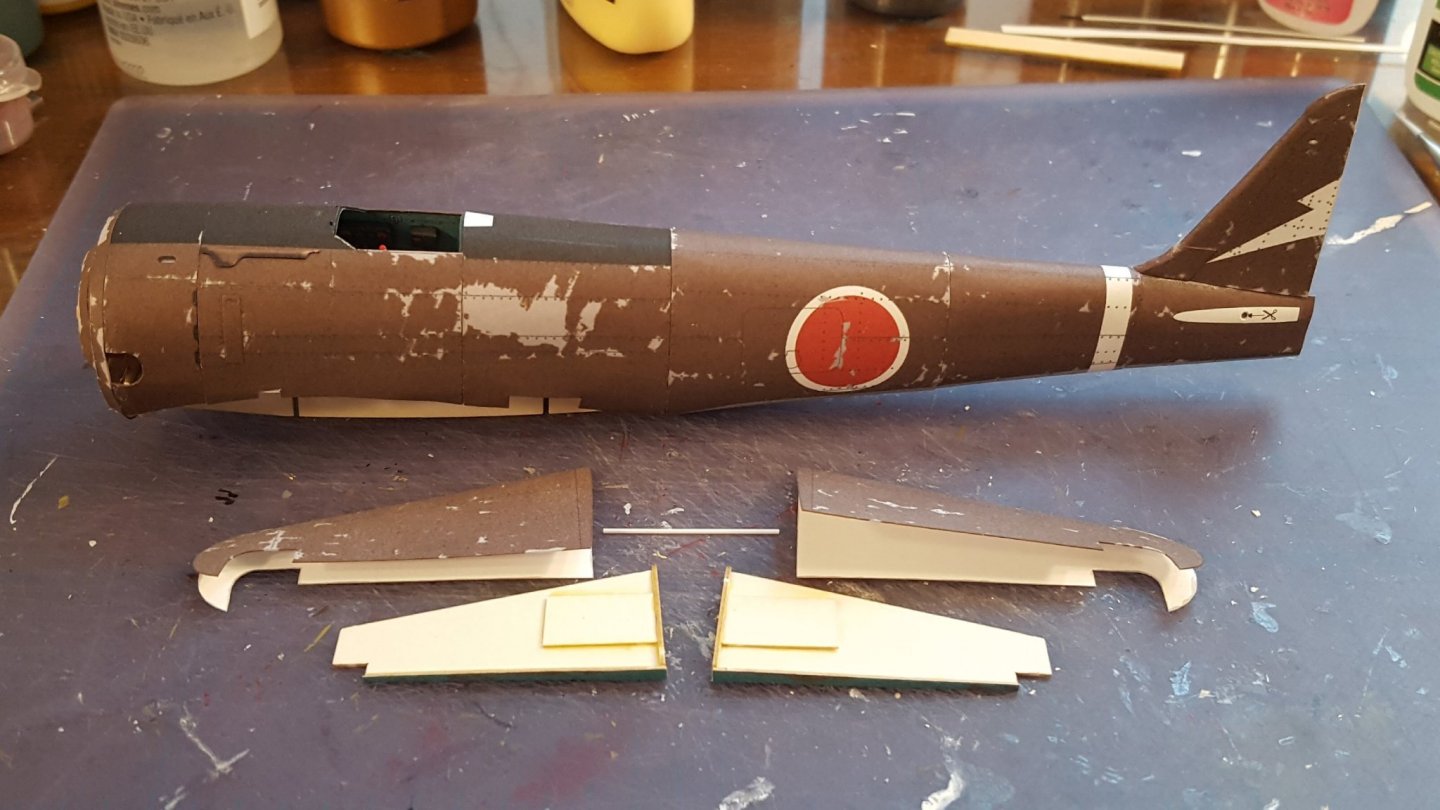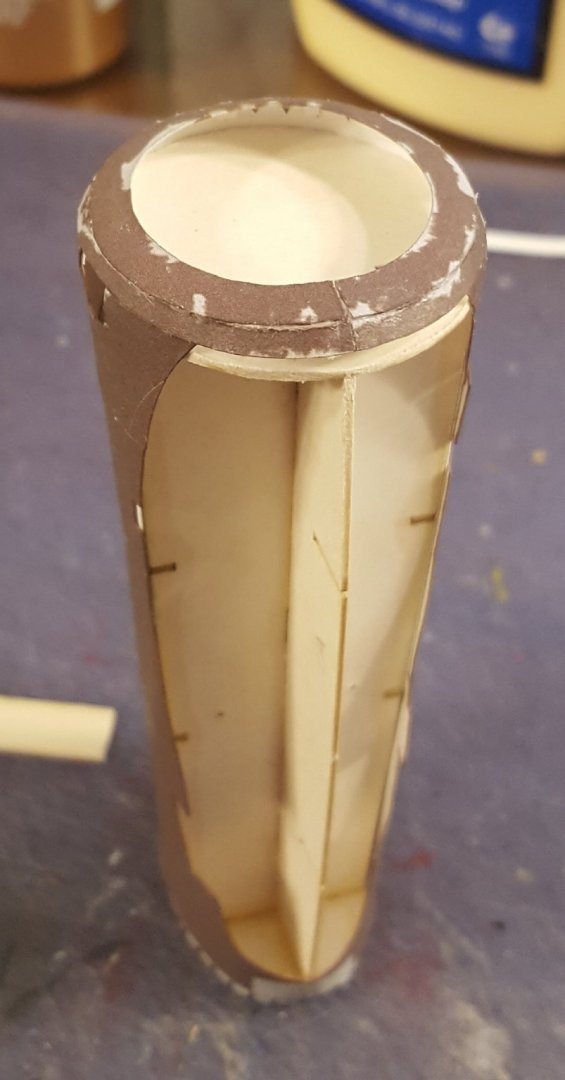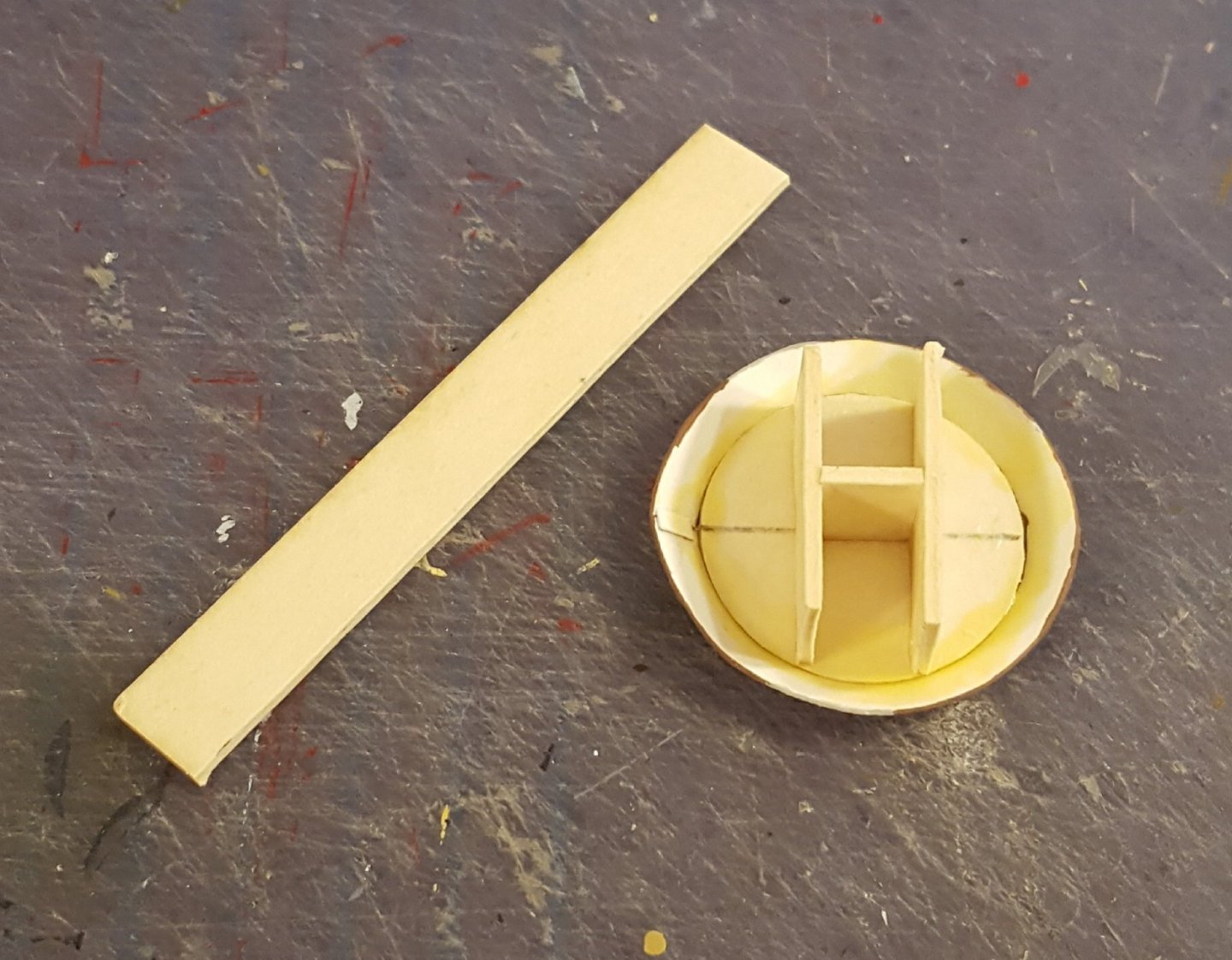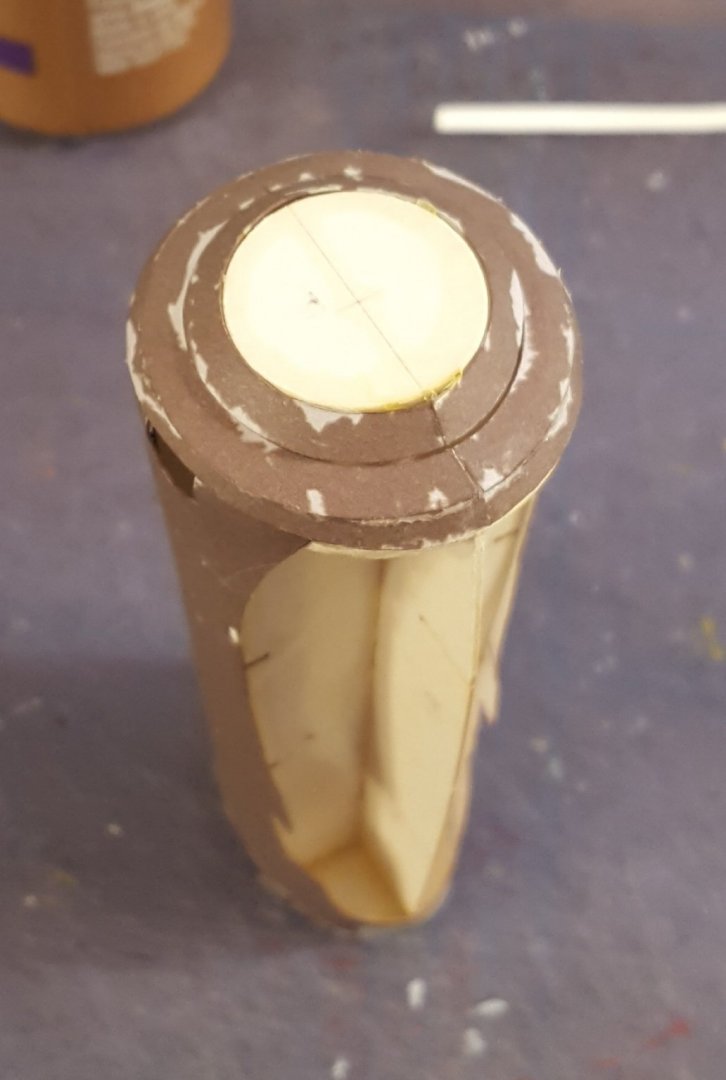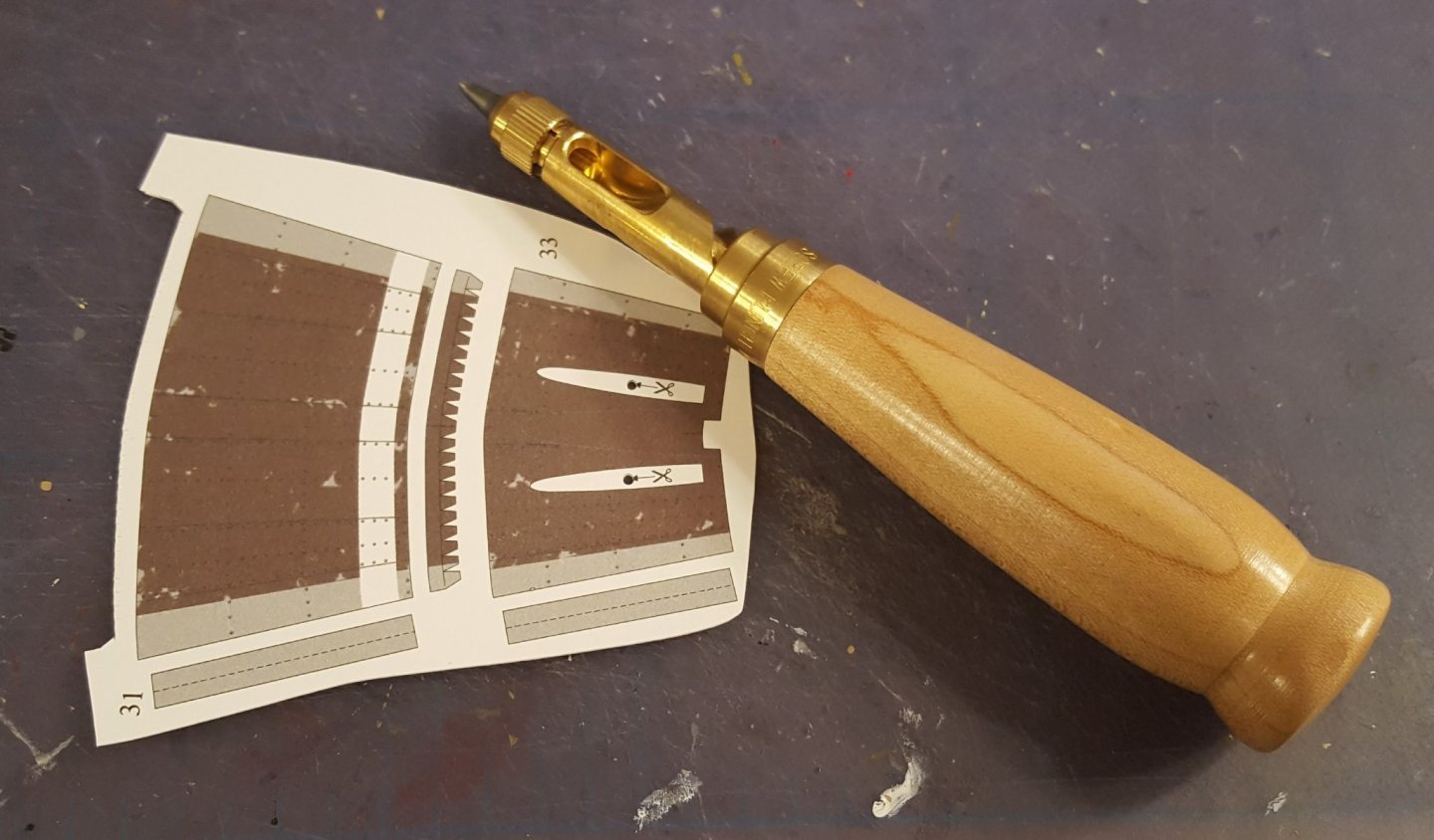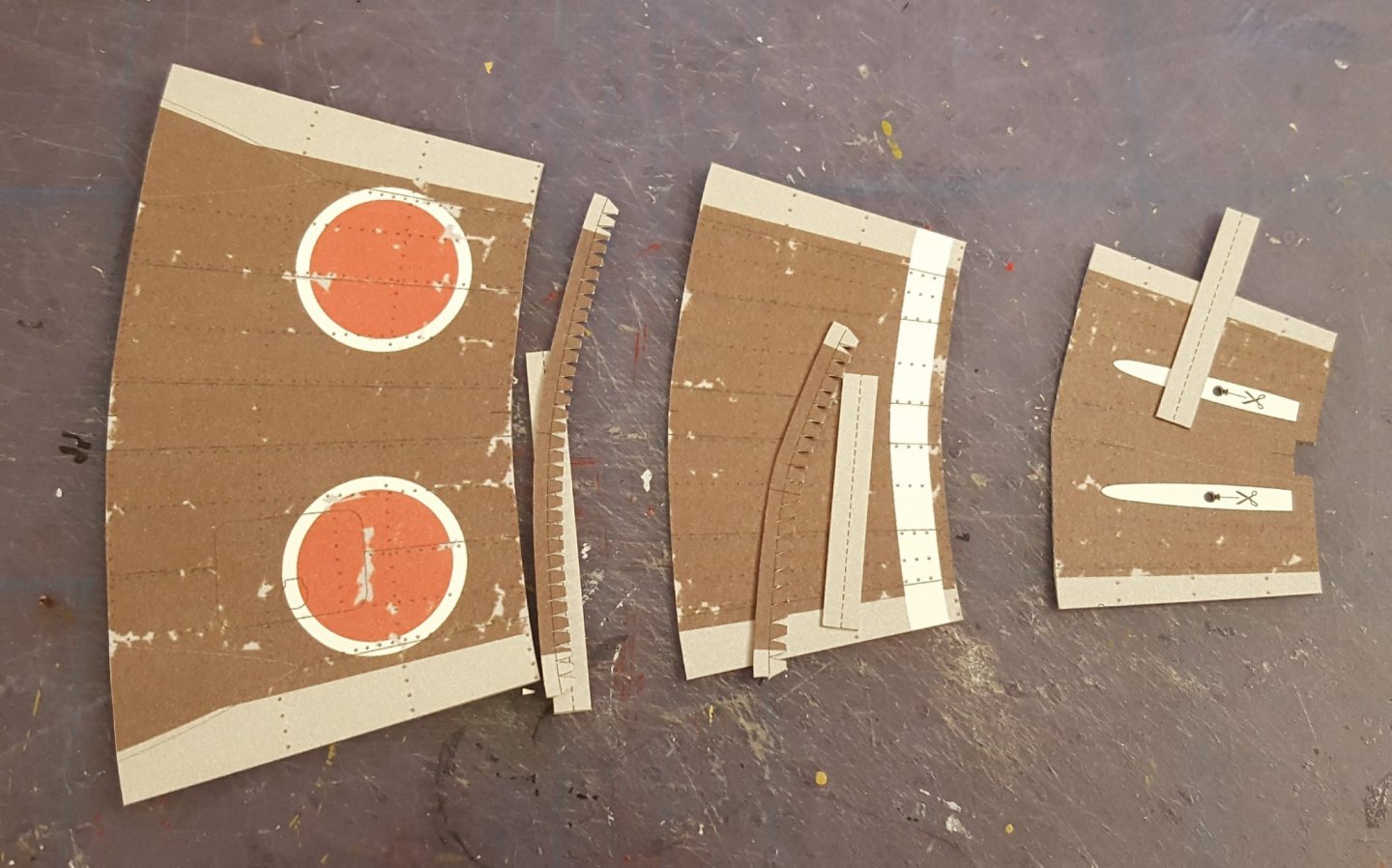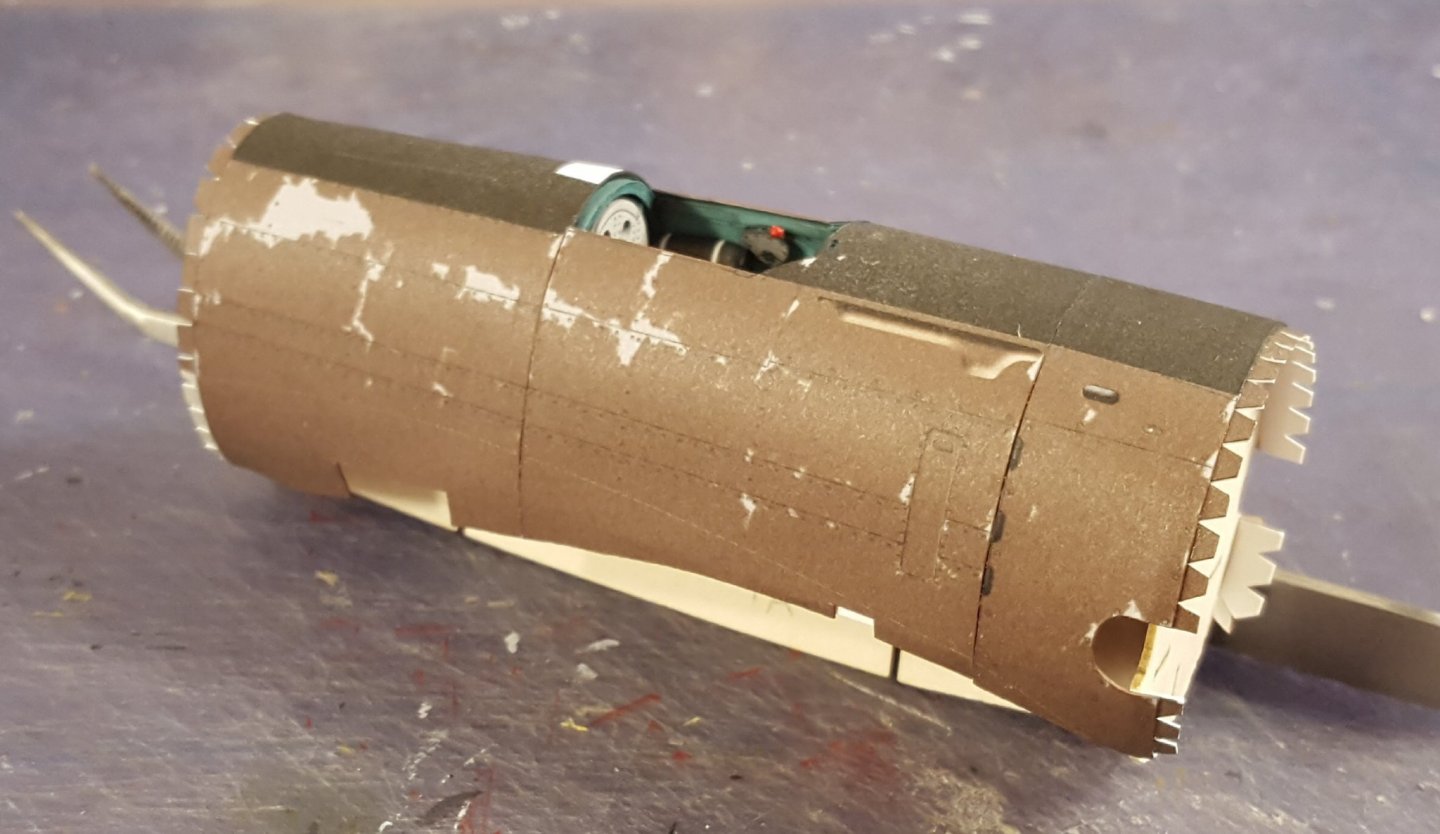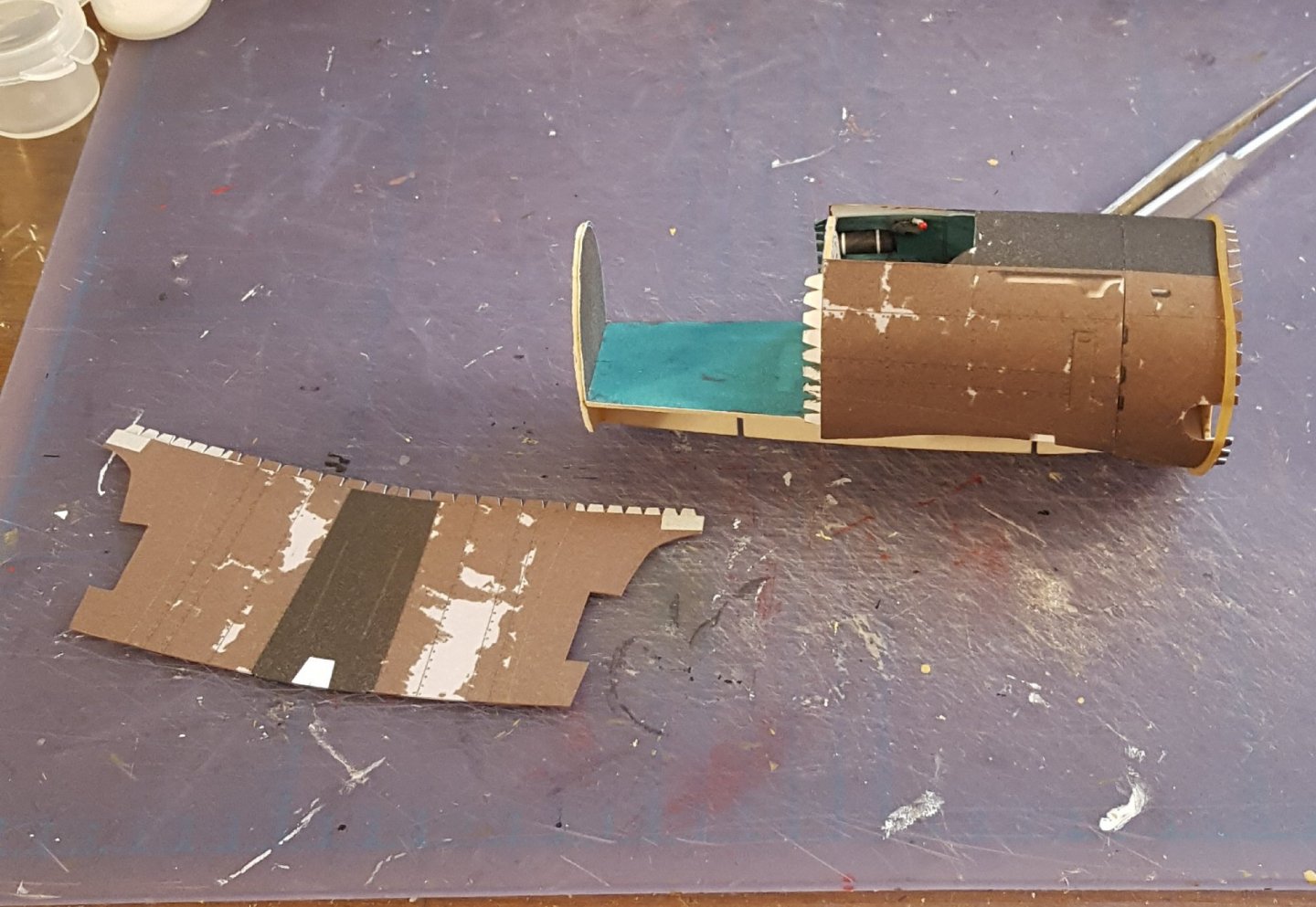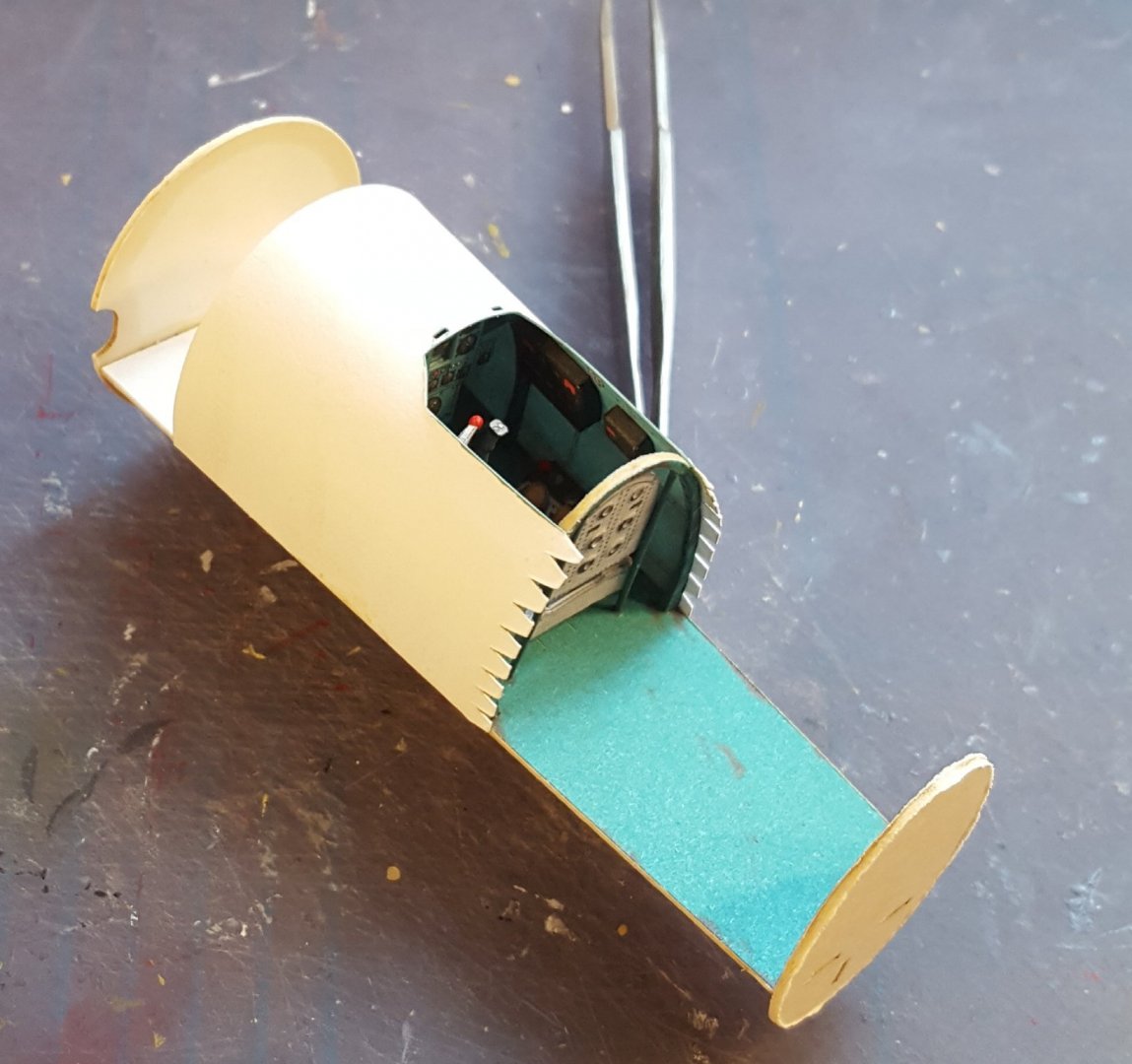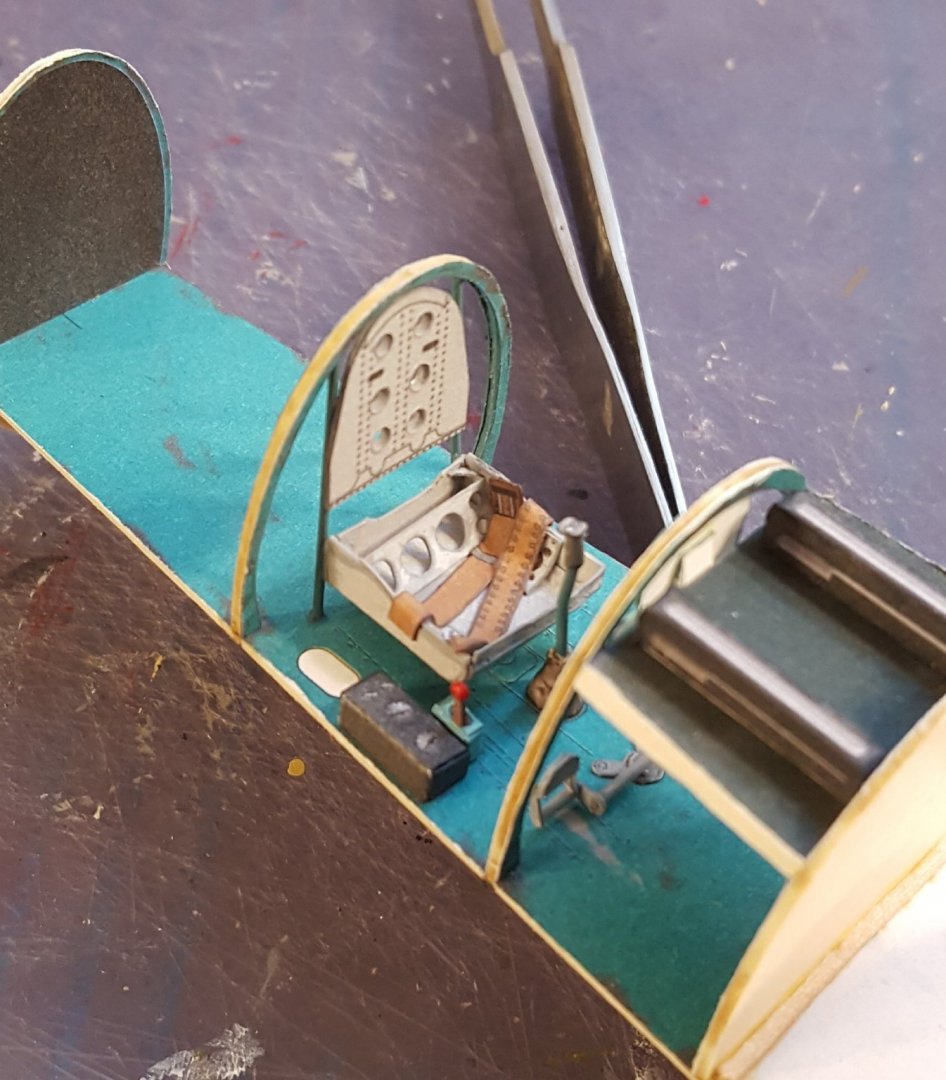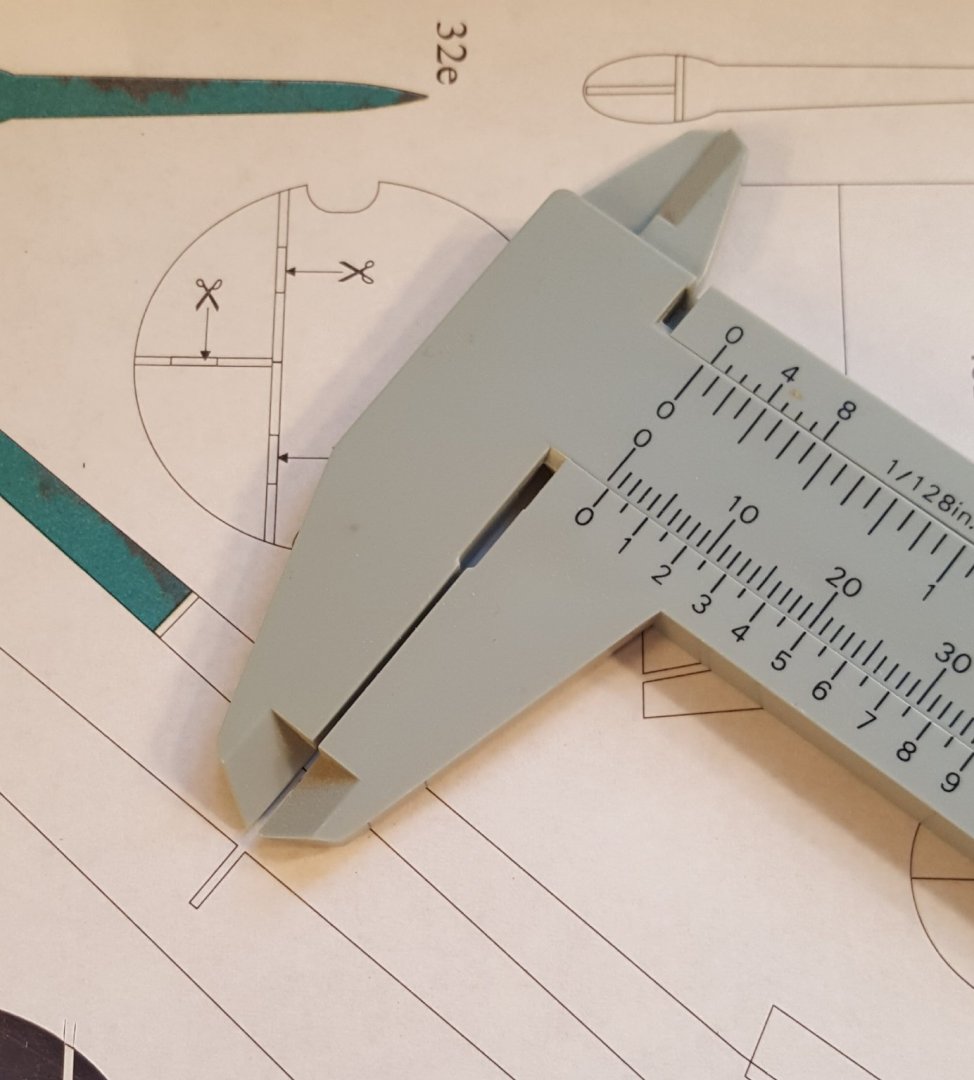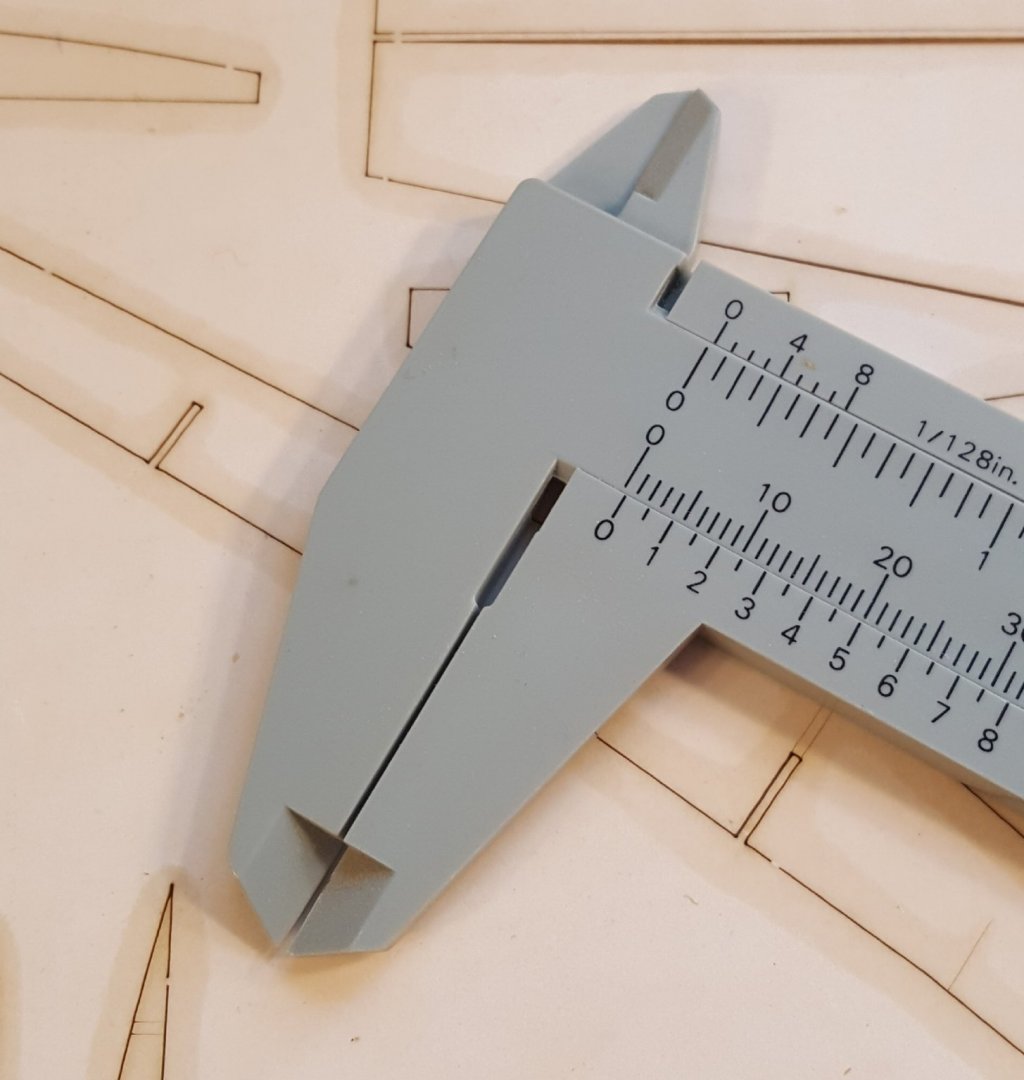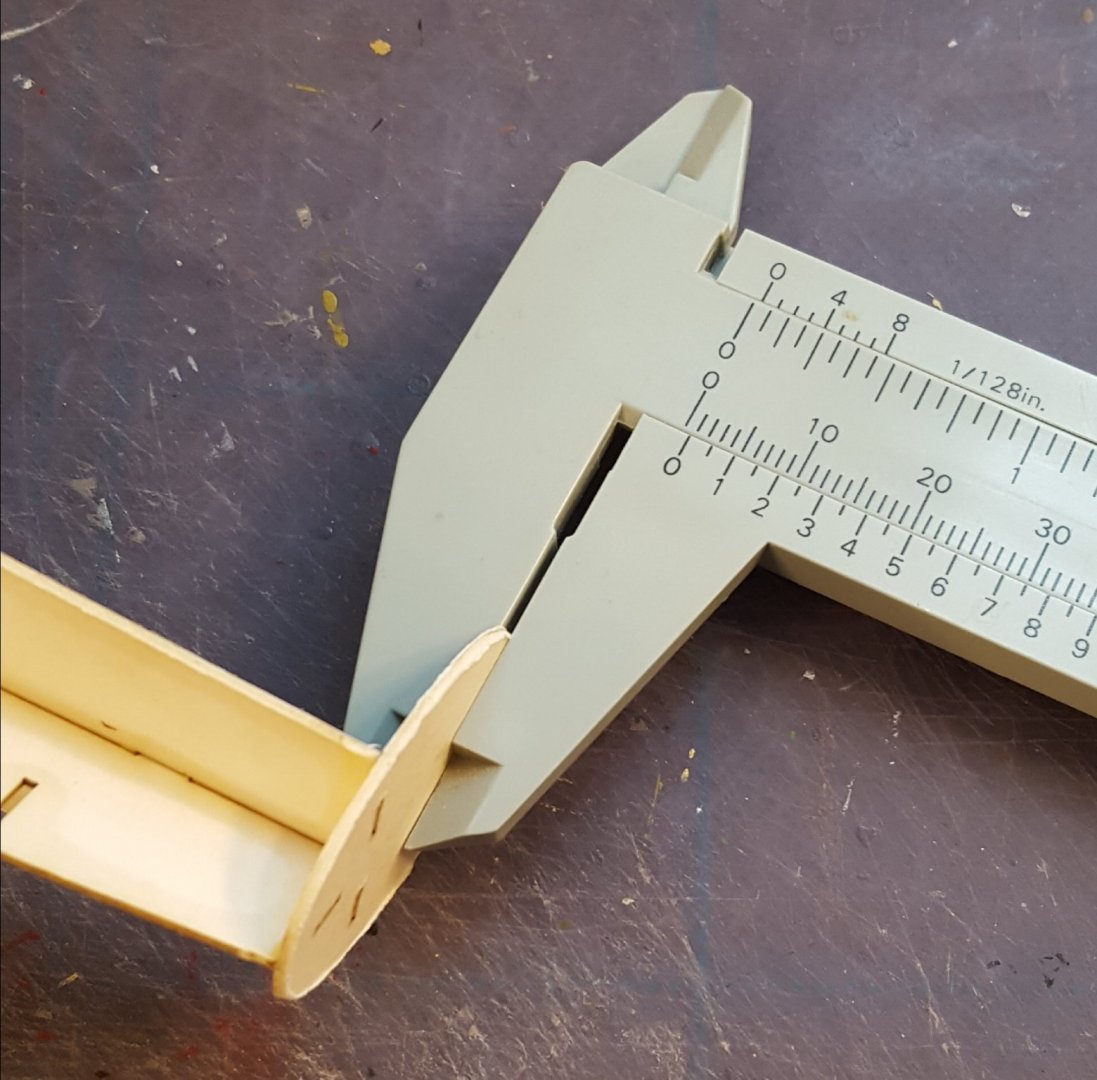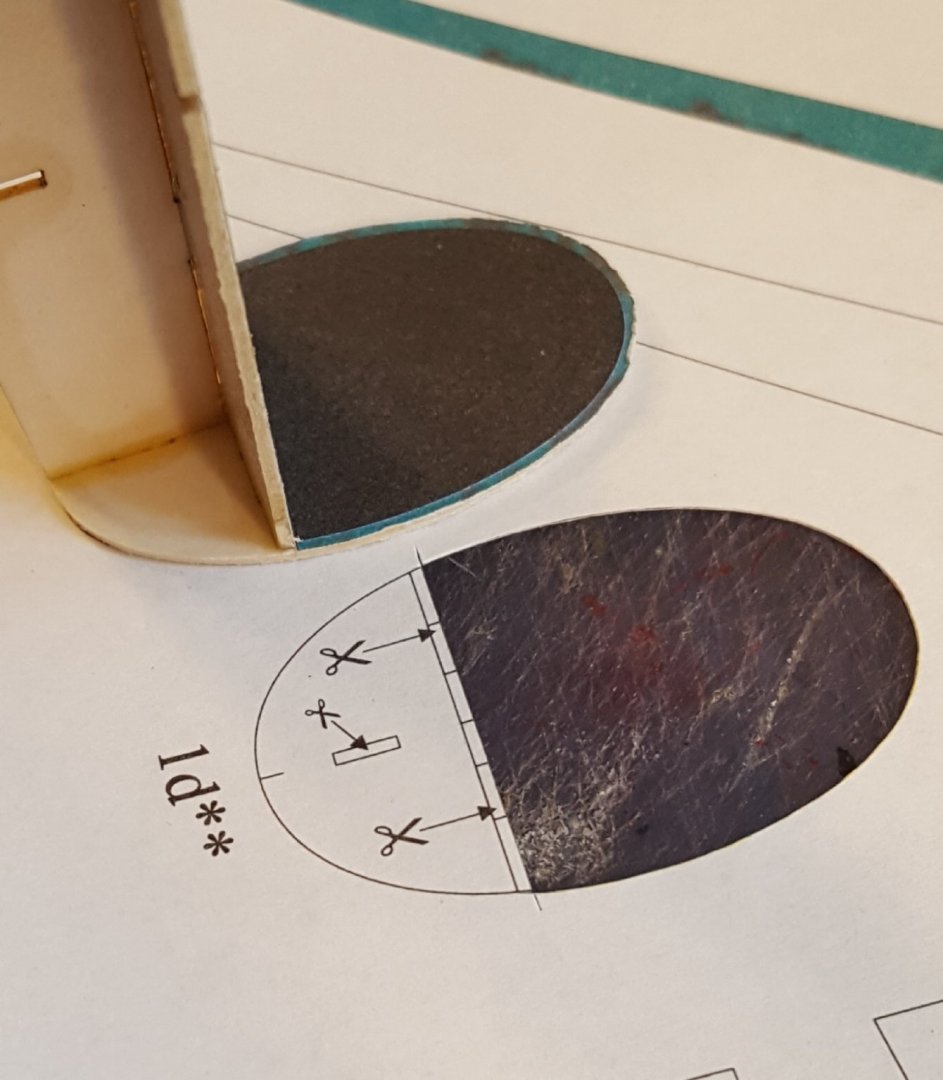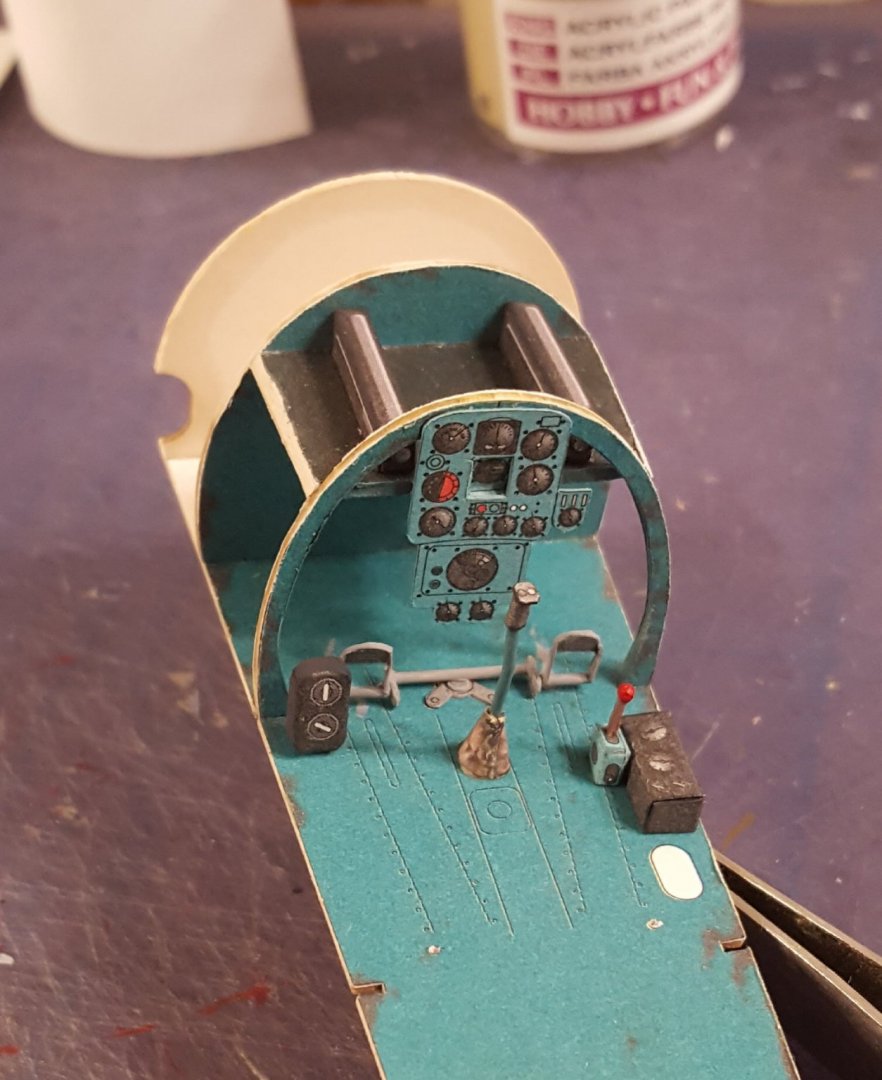-
Posts
10,438 -
Joined
-
Last visited
Content Type
Profiles
Forums
Gallery
Events
Everything posted by ccoyle
-
Working on the wing skeleton. This has been a less than enjoyable part of the build. One problem has been that there are only two interlocking joints in the entire structure (circled); the rest are butt joints. Butt joints might not be all that bad except 1.) most of the joint locations are not marked, neither on the kit parts nor on their laser-cut replacements, and 2.) white glue and wood glue have both shown a remarkable inability to "grab" the laser-cut cardboard quickly, forcing me to tack the parts with CA and then reinforce with wood glue afterwards. Oh, and 3.) the two main spars are each a single, long, FLOPPY piece. So, non-grabby glue + no locator marks + floppy parts + almost no interlocking joints = 🤬. But it's done.
-

Hello from the foothills in North Carolina
ccoyle replied to Tewhano's topic in New member Introductions
Welcome, Tewhano, from your neighbor to the south. I hate to be the bearer of bad news, but since your last forays into model ship building some rather unsavory characters have come on the scene in the form of unscrupulous manufacturers who shamelessly copy wooden model kits and then sell them. Your Halcon is made by one of these companies, which are mainly (though not solely) located in China. Please have a read here to learn about our stance on model kit piracy. If you want to have a crack at a kit in a larger scale, not to mention a kit that is far superior quality-wise, give us a shout, and we can direct you to any number of reputable manufacturers and dealers. Cheers! -
All stabilizers mounted and fillets in place. In order to counter the slight offset of the horizontal stabilizers, I had to add a tiny bit of dihedral -- normally the stabilizers lie in the same plane, but here they will tilt up just a smidge. The difference will only be noticed by the geekiest of airplane geeks. My wife just now asked about why the plane looks so scraped up. 😆
-
Burnin' a vacation day today and getting a little work done before settling down to watch some World Cup qualifying. I made a slight error with the vertical stabilizer which I did not catch until after it was done -- the vertical frame piece is supposed to set inside the skins about 1 mm back from the edges instead of flush. You can see the difference by looking at the aft edges of the stabilizer and fuselage. Hmm . . . oh, well. Horizontal stabilizer sub-assemblies completed and ready for final assembly.
-

Greeetings from Italy, Sardinia Island
ccoyle replied to Ugo Crisponi's topic in New member Introductions
Welcome! I love the figurines -- some very skillful painting on display there! -
Fuselage complete. Had to do a little nipping & tucking to get everything together to my satisfaction, but managed in the end. There's something weird going on with the empennage section -- the little center-line tick mark on the top and the bottom seam both line up properly with the section in front, but the printed horizontal stabilizer areas are not level. The port side is about 1 mm higher than starboard. But I'll deal with that later.
-

Rotary tool recommendations, preferences
ccoyle replied to Steve116's topic in Modeling tools and Workshop Equipment
I don't build them, but I bought one a couple of years ago so I could hunt an extra ten days in SC. Never once even saw a deer whenever I took my BP rifle out. 😢 Anyways, the real reason I chimed in on this thread is to say that I own a Dremel tool with a flex shaft attachment. I used it quite a bit when I was building wooden kits. I soon ditched the flex shaft -- it worked fine, but I just preferred working without it. Now that I'm working mostly in card, I rarely use my Dremel, but it does work nicely for turning aircraft wheels. As others have pointed out, you do have to pay attention to what you're doing when using a rotary tool for tasks like sanding, as it can very easily and quickly remove more material than intended. -
More exciting Oscar action! Moving forward (literally) toward the engine mount. The mount consists of three concentric rings supporting a bulkhead. You can see that the fit hasn't been so good on the first two rings, and there is an ugly gap at the bottom. I think this gap will eventually be filled with wing and covered by a fillet -- hopefully. But having nothing to brace the engine bulkhead is worrisome. Any pressure applied while mounting the engine could possibly collapse the structure. So, I measured the gap between to two bulkheads and cut some scrap card stock to act as spacers. And here's the last ring + bulkhead added. Once this dries, I will fill in some of the loose seams with white glue, but this will all eventually be hidden by the cowling. A handy tool to have for card modeling is a screw punch. I got this one for Christmas a couple of years ago, along with a set of ten bits in 0.5 mm increments from 1.0 to 5.0 mm. Here I've used it to punch out the two holes where the wires for the horizontal stabilizers will be inserted. And lastly, I cut out the remaining rear fuselage pieces so I can edge color them all in one batch. Soon we'll have a fuselage! Stay tuned!
-
Based on my experience, whatever you do, DON'T use an open flame. Styrene's melting point is pretty low. I'd start with the hot water and try that.
-
It might sound gross, but licking the part actually does the job nicely. 🤢 (BTW, licking might sound like a risk for damaging the paper fibers, but paper fibers consist of cellulose, for which humans lack the necessary digestive enzyme). For larger surfaces, I use a damp paint brush. I will sometimes delaminate a part if I judge the card stock part to be too thick. An example of this is the flags used in my 1/250 ship models. The flag is usually printed on card stock and designed to be folded to produce a two-sided finished flag. But such a flag is too thick to drape properly. Thus, I lightly wet the card stock, allow the water to penetrate the layers of fiber, then use a knife tip to separate the printed top layer from the remaining layers. I'll even gently scrape away any unwanted residual fibers from the back of the part. Card stock is also generally bad for forming tubes of very narrow diameters. To understand why, one must remember that a sheet of card stock is a three-dimensional product -- it's actually a very thin rectangular prism made of multiple layers. The layers of paper in the printed part want to shift as the tube is rolled, because each successive layer, going from top to bottom, must form a narrower tube than the one above it -- visualize what happens when you try to roll a magazine into a tube. The narrower the tube, the worse the problem is. One solution for this is to delaminate the printed part and then wrap it around a piece of styrene rod.
-
First of all, "moistening" in this case means very lightly wetted -- only enough to cause the paper to slightly curl. There are times when I purposely want card parts to delaminate, but when forming parts, if the card starts to delaminate, then it has gotten too wet. And yes, I do use a variety of "tools" to form parts. Some are actual tools, but most are just whatever cylindrical object is handy: knife handles, paint bottles, dowels of various diameters, etc. The side of a Titebond glue bottle happens to be perfect for many of the oval cross-sections of a fuselage.
-
Ah, memories! This was my first POB kit. Be advised, there are some issues with the instructions, unless they have been subsequently fixed. The biggest issue, as I recall, is that the instructions describe a single-planked construction, when the kit is in fact double-planked. I'll have to root around and see if I saved my construction notes somewhere (this was 20+ years ago). Cheers!
-
Cockpit area skinned. I joined the three sections together before adding the framed assembly. The fit was actually quite loose -- to offset this, I only tacked the outer skins on in a few spots, no forcing or squishing things together. I am quite pleased with the result -- the seams are snug, the panel lines align perfectly, and I didn't get any glue globs or smears anywhere. Everything is good to this point.
-
Moving forward with the outer skins. The first two sections have been joined together, but not yet to the inner cockpit skin; before the final placement of this shell, I will make sure that the first three sections, which will cover the length of the cockpit framing, align perfectly (or nearly so) and will fit the frames without any forcing. Each skin is slightly moistened, to weaken the paper fibers, then carefully formed into the correct shape -- it will hold its shape once the paper dries. Most of the sections will be butted together with the aid of a joiner strip; the flat piece in the photo has had its joiner strip attached and is now waiting for the glue to set before shaping can begin.
-
Once the inner cockpit skin is applied, the visual value of a tidy cockpit is somewhat lessened. BTW, another minor knock against this kit -- on the port-side interior of the cockpit (not visible in this image) is a cylinder of some sort, perhaps an oxygen cylinder or fire extinguisher. There are no location markings for the cylinder on the cockpit skin. The cylinder is shown in two different diagram views, but its location is different in each view. Thus, in the absence of corroborating evidence from other sources, the correct location for the cylinder is a bit of a guess. This lack of specificity in the diagrams was something I wrestled with during the Mohawk build.
-
Seat installed. After I finished the bottom portion of the seat, which consists of two layers of card, I discovered I had put it together incorrectly, with the outside layer on the inside and vice versa. Oops. 🙄 I thought it wasn't going together very easily -- now I know why. A thing to keep in mind as a builder when fretting over cockpits is that viewers like you, dear MSW member, are seeing this from an angle that will be quite impossible once the skins are on.
-
Okay, for all those who are interested, here's a lesson in card model error creep. In this first photo, I have used my incredibly expensive and precise calipers to measure the width of a slot in one of the wing spars. As you can see, this slot is about 0.4 - 0.5 mm wide. The billet that contains the part that will fit into that slot is also about 0.4 - 0.5 mm wide, which of course means that the part should fit snugly into the slot -- no problem. Now before we go further, we must keep in mind that a card model kit is designed and printed so that it can be built without after-market laser-cut frame sets. Normally, the internal frames would be glued onto either chipboard or laminated sheets of card and then cut out. It's up to the builder to make sure that the cardboard + printed parts + glue (this last part is often overlooked) comes out to the desired thickness, or about 0.4 - 0.5 mm in this instance. In many instances, if a laser-cut replacement part is used, the printed part is simply omitted from the construction. But what if a printed part has color on it, i.e. it's supposed to be visible after construction? Take a look at this next photo -- here I've measured the thickness of an internal bulkhead. It's a laser-cut part + printed part + glue. Notice it is now about 0.6 mm thick, not 0.4 - 0.5 mm. That's because of the added thickness of the printed part (printed on bond paper) and glue; it would be even thicker if the part were printed on card stock. We're only talking about 0.1 mm of error here, but the key word in error creep is creep -- little errors can add up to irksome headaches in precision kits. The solution in this case was to cut off and use only the colored portion of the printed part, thus avoiding the extra 0.1 mm that would have been added to the end of the floor piece if the entire printed part had been used. Will this reduce error creep in this model? We hope so! Stay tuned to find out if it worked. 🙂
-
Nearly every card model goes through a beta build, so somebody was able to build it correctly! Error creep can happen in several different ways, improper cutting and gluing being one such way. Another has to do with the tolerances built into laser-cut parts; sometimes, a colored part laminated onto a laser-cut part can make the part too thick. I'll try to get some photos to illustrate this later.
-
I'm trying very hard to do this kit justice and make everything as neat as possible. The first real test of the build's success will be seeing if the inner cockpit skin fits correctly (it should -- I've already cut it out and have test-fitted it). You may recall that the inner cockpit skin was where the Curtiss Mohawk build started to go sour.
-
Congratulations on the launch of your launch!
- 5 replies
-
- Model Shipways
- Bounty Launch
-
(and 1 more)
Tagged with:
About us
Modelshipworld - Advancing Ship Modeling through Research
SSL Secured
Your security is important for us so this Website is SSL-Secured
NRG Mailing Address
Nautical Research Guild
237 South Lincoln Street
Westmont IL, 60559-1917
Model Ship World ® and the MSW logo are Registered Trademarks, and belong to the Nautical Research Guild (United States Patent and Trademark Office: No. 6,929,264 & No. 6,929,274, registered Dec. 20, 2022)
Helpful Links
About the NRG
If you enjoy building ship models that are historically accurate as well as beautiful, then The Nautical Research Guild (NRG) is just right for you.
The Guild is a non-profit educational organization whose mission is to “Advance Ship Modeling Through Research”. We provide support to our members in their efforts to raise the quality of their model ships.
The Nautical Research Guild has published our world-renowned quarterly magazine, The Nautical Research Journal, since 1955. The pages of the Journal are full of articles by accomplished ship modelers who show you how they create those exquisite details on their models, and by maritime historians who show you the correct details to build. The Journal is available in both print and digital editions. Go to the NRG web site (www.thenrg.org) to download a complimentary digital copy of the Journal. The NRG also publishes plan sets, books and compilations of back issues of the Journal and the former Ships in Scale and Model Ship Builder magazines.

